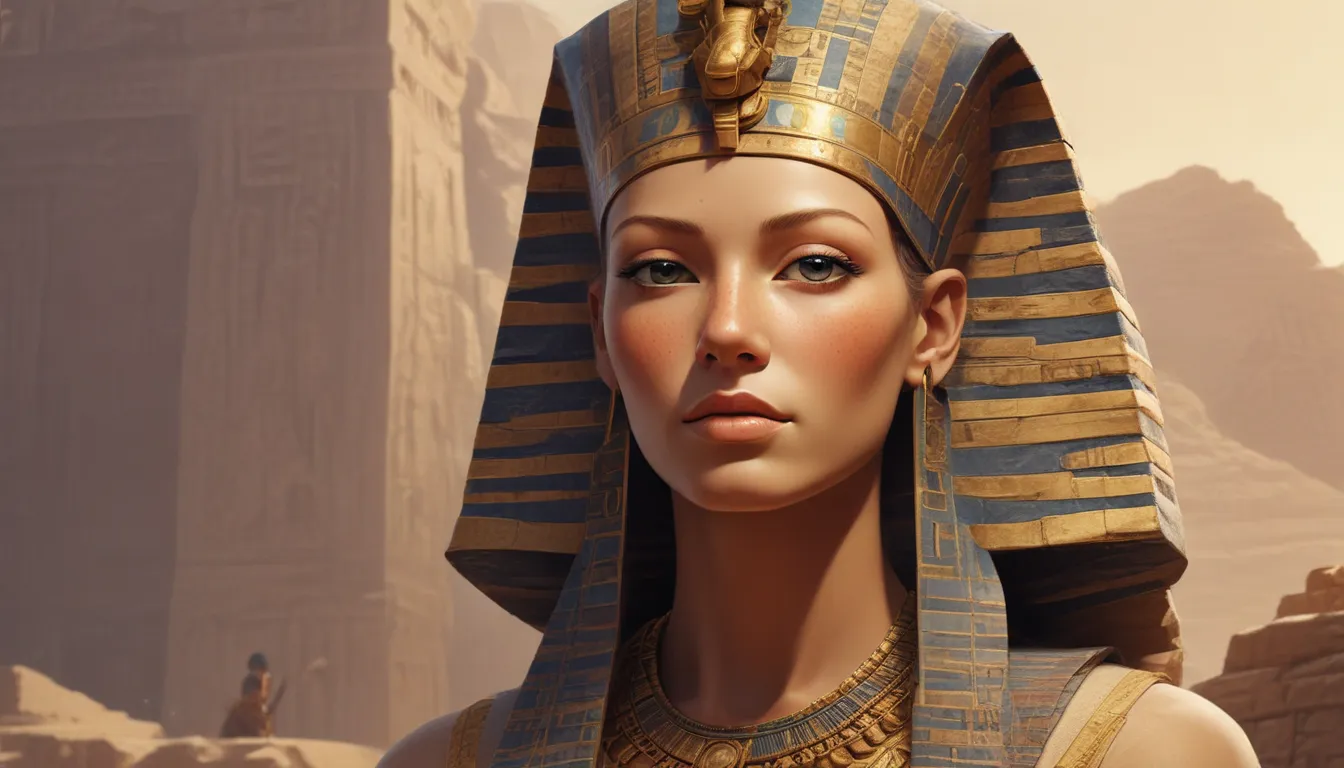The images in our articles may not match the content exactly. They are used to grab your attention, not to show the exact details in the text. The images complement the text but do not replace it.
Have you ever pondered the enigmatic allure of one of ancient Egypt’s most captivating figures? Hatshepsut, a name resonating with power and mystery, transcends the conventional image of a queen, emerging as a pharaoh who defied societal norms and expectations. What makes her truly remarkable? Well, for starters, she shattered the confines of ancient patriarchy to lead Egypt into an era of prosperity and unparalleled achievements. From her audacious ascent to power to her ambitious architectural endeavors, Hatshepsut’s narrative is nothing short of enthralling. So, fasten your seatbelts as we embark on a journey back in time to unravel 21 intriguing Hatshepsut fun facts. These insights will not only enlighten but also entertain, providing a glimpse into the life of a ruler who stood ahead of her time. Are you ready to be spellbound by the legacy of this female pharaoh? Let’s delve into the captivating world of Hatshepsut!
Unveiling the Persona of Hatshepsut
Hatshepsut, one of ancient Egypt’s most enigmatic figures, ascended to the throne as a female pharaoh, overseeing a civilization that echoes through the annals of history. Her reign, commencing around 1478 BC, heralded a period of opulence and monumental architectural achievements. In stark contrast to her predecessors and successors, Hatshepsut prioritized bolstering Egypt’s economy and spearheading grand construction projects, notably her iconic mortuary temple at Deir el-Bahri.
- Hatshepsut wasn’t merely a pharaoh; she was among the rare women to wield the full authority of the position in ancient Egypt.
The Unconventional Path to Power
Hatshepsut’s trajectory to supremacy was anything but conventional. Initially assuming the role of regent for her stepson, Thutmose III, who was deemed too immature to rule, she gradually transitioned from regent to co-ruler, ultimately proclaiming herself pharaoh. Through strategic portrayals of herself in traditional male pharaonic garb, such as the iconic false beard, in statues and reliefs, she entrenched her authority both publicly and within the religious hierarchies of the time.
Architectural Marvels of Hatshepsut
Amidst her myriad achievements, Hatshepsut shines brightest for her architectural innovations. Her mortuary temple at Deir el-Bahri stands as a testament to the ingenuity and aesthetic magnificence of ancient Egyptian craftsmanship. Perched against the cliffs of the Theban hills, this temple ranks among the architectural wonders of antiquity, seamlessly merging with its natural environs. Furthermore, Hatshepsut spearheaded trade expeditions to the Land of Punt, reaping riches and exotic commodities, such as incense and ivory, that further enriched Egypt’s splendor.
Unearthing Hatshepsut’s Enduring Legacy
Despite her monumental feats, Hatshepsut’s legacy faced near obliteration. Successors sought to expunge her memory by defacing her monuments and expunging her name from king lists. However, contemporary archaeology has unearthed the veritable chronicle of her reign, portraying her as a warrior and builder, a sovereign who ushered prosperity to her people. The identification of Hatshepsut’s mummy in 2007 marked a pivotal moment in Egyptology, offering invaluable insights into her life and reign, forging a tangible link to Egypt’s bygone era.
Capsule of Hatshepsut’s Religious Impact
Hatshepsut’s profound religiosity manifested in substantial contributions to the Egyptian pantheon, including the erection of temples venerating the god Amun. Testimonials to her devotion abound in the profusion of statues and offerings adorning these sanctuaries, intended to garner divine favor for both her reign and afterlife. The Festival of the Valley, a momentous religious observance during her rule, underscored her dual role as a political and spiritual luminary, reinforcing the nexus between the living and the departed, a pivotal facet of ancient Egyptian ethos.
Delving into the Enigma of Hatshepsut’s Demise
The enigmatic circumstances surrounding Hatshepsut’s demise remain shrouded in mystery. Speculations range from illness to conjectures of a palace coup orchestrated by her stepson, Thutmose III. While her tomb, unearthed in the Valley of the Kings in the early 20th century, bore scant traces, sparking ponderings regarding the fate of her mummified remains until their definitive identification in 2007. Hatshepsut’s passing heralded the culmination of one of ancient Egypt’s most bounteous and tranquil eras, underscoring the potential of female leadership within a predominantly male-dominated society.
Reviving Hatshepsut’s Enduring Influence
Hatshepsut’s reverberating influence transcends her era, with subsequent female rulers often emulating her reign as a blueprint for effective governance and leadership. The rediscovery of her contributions heralded a reevaluation of women’s roles in ancient history, spotlighting the capacities and accomplishments of female leaders in a predominantly male-centric milieu. Her reign challenges archetypal narratives pertaining to power and gender, illustrating that leadership acumen transcends gender confines. Hatshepsut’s once concealed saga crystallizes as a potent exemplar of the reshaping and recollection of history, safeguarding the legacies of luminaries like her from oblivion. Her enduring legacy conveys profound lessons regarding the valorization and commemoration of women’s contributions to our common history, resonating enduringly in contemporary society.
The Everlasting Reverberations of Hatshepsut’s Legacy
Hatshepsut, an emblem of resilience and innovation, reshaped the landscape of ancient Egypt with her sagacity and ambition. Her reign, characterized by affluence, architectural wonders, and a resolute assertion of female prowess, continues to inspire and captivate. Reflecting on her saga evokes the realization that Hatshepsut transcended the confines of conventionalism, blazing a trail for future generations. Her monuments stand not merely as edifices of stone but as enduring symbols of her indomitable spirit. Hatshepsut’s evolution from queen to Pharaoh epitomizes her unyielding resolve and intellect, urging us to transcend boundaries and strive for eminence. Abounding in intrigue and accomplishments, Hatshepsut’s tale serves as a clarion call, guiding us towards a brighter and more inclusive future.
Frequently Asked Questions
Q: What sets Hatshepsut apart as one of Egypt’s most intriguing rulers?
A: Hatshepsut’s distinction arises from her status as one of the few female pharaohs in ancient Egypt. Rather than settling for the title of queen, she assumed the mantle of pharaoh, adorning herself in the full regalia, including the symbolic false beard representing kingship. Her reign epitomized peace, opulence, and monumental construction projects that endure through time.
Q: How did Hatshepsut ascend to power in a society dominated by men?
A: Initially serving as regent for her stepson, Thutmose III, who was deemed unfit to rule, Hatshepsut gradually assumed the full powers of a pharaoh, leveraging her acumen, political astuteness, and the backing of crucial officials to secure her position. Her adept navigation of court intrigues facilitated a reign stretching over two decades.
Q: What were some of Hatshepsut’s most noteworthy achievements?
A: Among her manifold accomplishments, the expedition to the Land of Punt emerges as a standout achievement. This trading venture yielded abundant riches, including gold, ivory, and myrrh. Additionally, Hatshepsut embarked on a prodigious building campaign, notably erecting her mortuary temple at Deir el-Bahri, a masterpiece of Egyptian architecture.
Q: Did Hatshepsut encounter opposition during her reign?
A: Despite her triumphs, Hatshepsut faced obstacles, particularly concerning the legitimacy of her rule. Certain factions in the royal court and priesthood may have contested a female pharaoh. Nonetheless, she adeptly navigated these challenges, frequently portraying herself in traditional male pharaonic regalia in statues and reliefs to affirm her authority.
Q: How did Hatshepsut’s reign draw to a close?
A: Hatshepsut’s reign concluded with her demise, after which Thutmose III assumed sole rulership. Intriguingly, subsequent endeavors were undertaken to erase her from historical annals, including the defacement of her images and statues. Scholars speculate that this was not driven by animosity but rather to legitimize the male line of succession.
Q: What enduring legacy did Hatshepsut bequeath?
A: Despite endeavors to expunge her memory, Hatshepsut’s legacy enshrines her as a potent and successful pharaoh. Her architectural marvels and monumental structures evoke admiration for their beauty and technical prowess. Furthermore, her reign stands as a testament to the capacities of women in leadership roles, challenging conventional narratives surrounding gender and authority in ancient societies.
Q: Are there remnants of Hatshepsut’s monuments accessible today?
A: Undoubtedly! Her mortuary temple at Deir el-Bahri, proximate to Luxor, welcomes visitors, standing as one of Egypt’s most frequented and scrutinized ancient sites. Its distinctive design and the narrative of the woman behind its construction render it a must-visit for enthusiasts of Egypt’s storied past.
Did this article resonate with you?
Our dedication to delivering informative and engaging content remains the cornerstone of our endeavors. Each tidbit on our platform is contributed by real individuals like you, enriching our repository with diverse insights and knowledge. To ensure the pinnacle of accuracy and reliability, our devoted editors meticulously vet each submission. This meticulous process guarantees that the facts we impart resonate with not just fascination but also credibility. Entrust in our commitment to excellence and authenticity as you explore and absorb knowledge alongside us.
By encapsulating the essence of Hatshepsut’s awe-inspiring journey, we aim to kindle a fascination with ancient history while celebrating the enduring legacy of formidable women in leadership roles. As we pay homage to Hatshepsut’s indelible imprint on Egypt’s legacy, let us revel in the timeless triumphs of an icon who defied norms and reshaped history.






